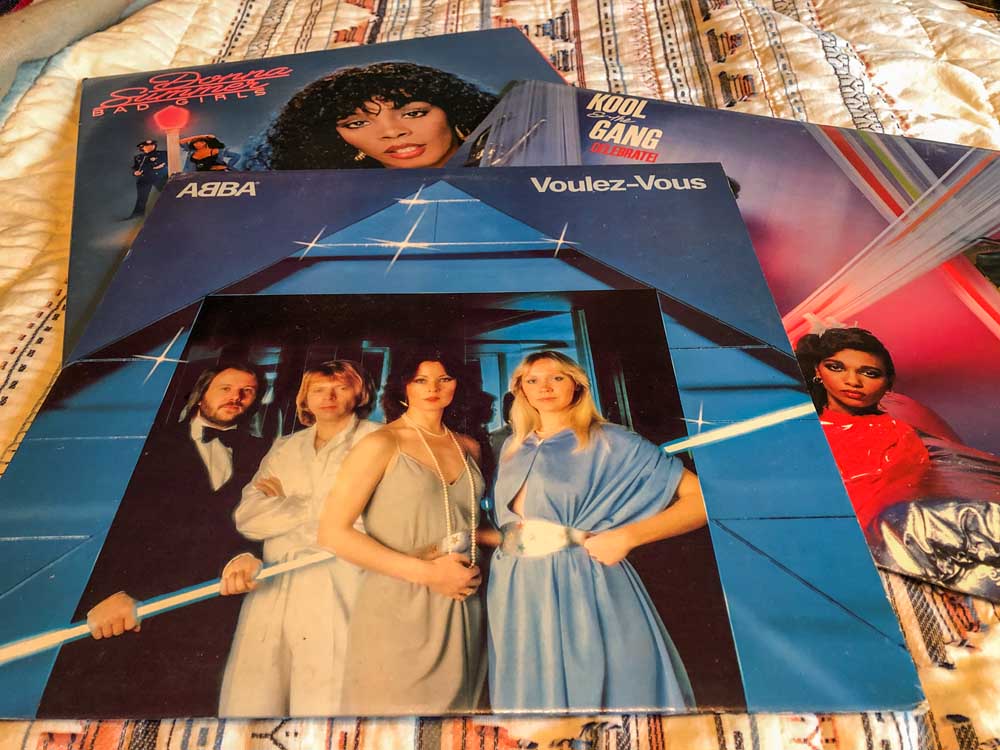Get down with the history of disco
Published 1:45 am Thursday, August 13, 2020

- Vintage disco records featuring Kool & The Gang, ABBA and Donna Summer
You’ve seen the images of the leisure suit-clad dancers and you’ve heard the funky beats that emulated from the record players of the day, but maybe you’re too young (or too involved in the era) to know the history of the decade-defining genre of disco.
Turn the beat around
The full history actually stems back to World War II Europe, where discotheques were established in Nazi-occupied France. They banned live music, so the French clubs began playing records instead and adopted the new name that meant “library of phonographic records.”
In Paris, 1947, the famous Whiskey A-Go-Go opened as featuring colored lights on the dance floor and two turntables, meaning the music could continue uninterrupted all night long.
The music itself came from various musical stylings that were popular in Philadelphia and New York clubs in the late ’60s, specifically those in the Black, Latino, Italian and gay neighborhoods. It was all a reaction to the counterculture of the decade, the rise of rock and the stigma that dance music carried with it.
Slowly, elements of disco began to appear in popular tunes like the Supremes “You Keep Me Hanging On” in 1966 and Stevie Wonder’s “Superstition” in 1972. The four-on-the-floor beat (the bass drum is played on every beat in 4/4 time) along with hi-hat rhythms on drums were staples of the music early on.
DJs became vital to the movement including Tom Moulton who created extended mixes of songs to keep the dancing going.
Concurrent with the change in the music, the club scenes began to change thanks to underground dance scenes in New York, notably DJ David Mancuso’s home The Loft, where many invitation-only events were hosted that welcomed a large number of those in the LGBT community. Soon, other underground venues began popping up, creating spaces where gay people could dance together without the fear retribution, harassment or the possibility of arrest.
The vibe of the clubs meant that people of different races, economic backgrounds, cultures, sexual orientations and more could interact and dance freely together.
Soon though, all disco clubs would emerge in the cities’ nightlife and take hold with their all-night dancing and anything goes attitudes.
On TV, Soul Train arrived in 1971 bringing the beat of the new genre to living rooms across America, and by 1973 disco dance lessons were offered by Karen Lustgarten, who would go on to write a book on the moves, naming them all, such as the Hustle.
Stayin’ alive
Between 1974 and 1977 disco rose prominently with the releases of “Rock the Boat,” by The Hues Corporation and “Kung Fu Fighting” kicking off ’74 with top releases. The following year saw Gloria Gaynor’s first album skyrocketing her to the top of the Billboard disco/dance charts.
The middle of the decade brought more of the iconic bands that would forever solidify the genre including ABBA and the Bee Gees.
By 1977, the release of “Saturday Night Fever” and a soundtrack filled with solid disco tunes, including several from the Bee Gees, solidified the music and dance culture in the public consciousness, bringing it mainstream.
Fashion for the dance craze also took hold, with easy-to-move-in clothing such as polyester and less restrictive items for women, including wrap dresses.
The most famous club to come out of the disco movement opened in 1977 when business partners Steve Rubell and Ian Schrager opened the iconic Studio 54. In just six weeks, the two had transformed the old CBS Television studio into one of the most sought after venues in New York.
The club was the place to be if you wanted to dance, and anyone could get in, provided you were famous or good looking enough. Everyone who was anyone went to Studio 54 and did just about anything they wanted to.
Last dance
In the late 1970s, Studio 54 came under suspicion when Rubell was quoted as saying “Only the Mafia made more money.” Soon, the place was raided and it was discovered, along with various drugs, that the owners had been skimming thousands of dollars each night and keeping it all off the books.
By 1980, the club had closed and Rubell and Schrager were sent to prison for tax evasion.
With the shuttering of the most famous venue came the death knell for disco.
Rock musicians and their fans were incredibly vocal in their disdain for disco and called those who had disco elements in their music sellouts. Punk was also on the rise in both the U.S. and U.K., with probably the most disdain for the music. The Dead Kennedy’s, for instance, in their song “Saturday Night Holocaust,” compared disco to the cabarets of Weimar-era Germany, admonishing the music for favoring escapism and political apathy.
On July 12, 1979, the disco era was declared dead when radio DJs Steve Dahl and Garry Meier staged an event at Comiskey Park in Chicago during a White Sox double-header that incinerated disgruntled fans’ disco records.
However, the genre never really died, and it remained a quieter success through the 1980s with songs like “Flashdance…What A Feeling” and several Michael Jackson hits. The music continues today in various one-off hits like “One More Time,” by Daft Punk and Dojo Cat’s “Say So.”
No matter what, disco keeps stayin’ alive.






